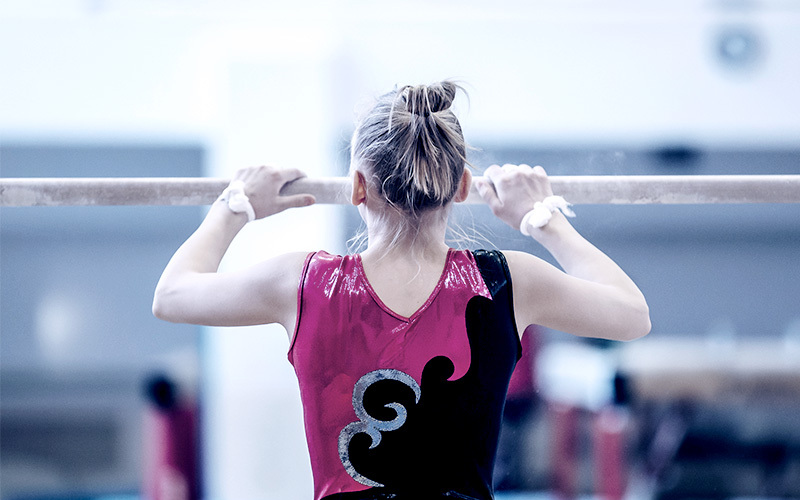Study links urinary incontinence in female athletes to low energy availability

Urinary incontinence (UI) is a common experience for female athletes that can significantly impact their enjoyment of and participation in sports. Previous studies have shown that female athletes who experience urinary incontinence are more likely to drop out of their sports. Noting a large number of female athletes presenting with urinary incontinence, physicians in the Boston Children’s Hospital Female Athlete Program and the Department of Urology wanted to better understand the underlying factors that may contribute to the problem.
Study details
- 1,000 female athlete participants between the ages 15 and 30.
- 16.5% (165) reported sports-related UI.
- Those with low energy availability were 2 times as likely to report urinary incontinence across all sport categories.
- Those who participated in high-impact sports were 4.5 times as likely to report urinary incontinence.
“We knew that low energy availability, which occurs when athletes don’t take in enough calories to meet the energy demands of their training, has been linked to a number of health and performance problems in female athletes,” says sports medicine physician, Kristin Whitney, MD, MA. Such issues include menstrual dysfunction, poor bone health, cardiac and gastrointestinal problems, and decreased muscle strength and endurance — to name a few.
“We wondered if low energy availability might also be related to urinary incontinence, and what that could mean for our patients.” In a study lead by Kathryn Ackerman, MD, MPH, medical director of the Female Athlete Program, the team set out to explore this question.
Studying urinary incontinence in female athletes
The researchers conducted a cross-sectional cohort study of 1,000 female athletes between ages 15 and 30 who presented to Boston Children’s Sports Medicine Division for any reason. The comprehensive survey included questions about the athletes’ nutrition and general health, exercise and performance, self-reported history of disordered eating, and urinary incontinence during sports.
Of the female athletes surveyed, 16.5 percent reported urinary incontinence during athletic activity. Athletes participating in high-impact sports such as running, cheerleading, and gymnastics were more than four times more likely to report urinary incontinence compared to other sport categories. However, no matter what sport they participated in, UI was far more prevalent in athletes with low energy availability. The results of the study were published in the Journal of Pediatric Urology.
“We were able to discern that low energy availability is an independent risk factor for urinary incontinence across all sport categories,” says Whitney. “If you had poor nutrition and low energy availability, you’d be at high risk for urinary incontinence.”
Implications for female athletes
The results of this study could provide physicians opportunities to treat urinary incontinence more effectively. “It opens up a lot of doors and a lot of really great conversations between our Sports Medicine Division and our colleagues in the Department of Urology,” says Whitney.
The study could also have a positive impact on female athletes. Knowing urinary incontinence is a common issue that can be addressed in concrete ways could convince athletes discouraged by urinary incontinence to stay engaged in their sports.
“Sport participation is such a crucial component of young women’s development,” says Whitney. Benefits extend far beyond physical health to include mental health, personal development, and personal growth. “Anything that we can do to better understand and support young female athletes can help us help them grow up healthy, strong, and happy.”
Future research could look at running gait
The results of this initial study have generated several options for future research, including possible links between running gait and urinary incontinence. “Twenty percent of the runners we surveyed experience urinary incontinence,” says Whitney. The Division of Sports Medicine and its Injured Runner Clinic uses sophisticated running gait analysis technology to help runners improve the biomechanics of how they run. “Using this technology, we could look at things like whether modifying a runner’s landing patterns and the resulting ground reaction force could potentially modify their risk for urinary incontinence.”
2021 Virtual Female Athlete Conference
June 10-12
The Female Athlete Conference advances research and promotes awareness of the unique physiology of female athletes and best treatment practices. The conference is open to athletes, coaches, trainers, and physicians, and anyone involved in the health and wellness of female athletes.
Learn more and register.
Learn more about the Female Athlete Program and Department of Urology.
Related Posts :
-

Parsing the promise of inosine for neurogenic bladder
Spinal cord damage — whether from traumatic injury or conditions such as spina bifida — can have a profound impact on bladder ...
-

Ask a sports medicine specialist: Why are ACL tears so common among female athletes?
When an athlete is sprinting after an opponent who suddenly stops or changes direction, their anterior cruciate ligaments (ACLs) make ...
-

Forging a path back to school after orthopedic trauma
Orthopedic trauma can force children to miss school, sometimes for an extended period. But even when patients have regained enough ...
-

Jackie’s dreams of playing professional soccer back on track after ACL surgery
From her dorm in Newcastle, England, Jackie Zapata can hear fans roaring in the soccer stadium a few blocks away. ...





